(01) Absence: That which is not Here.



digital essay
Through our imagination, we can evoke things that are not physically present but exist in the distant Elsewhere. In this process, the absent becomes a central protagonist. Histories of migration have shaped generations in a constant state of flux – navigating between the present Here and the absent Elsewhere.
The Elsewhere is not a fixed reality but a constructed, imagined world — layered with subjective projections, fears, and desires.

How can the subject mediate between the Here and the Elsewhere?

The subjects mediation between the two states of existence can feel like an endless journey. Constantly moving in the void of the two places. [02:30]
(02) Myth: How is the Elsewhere constituted?

For the subject imagining, the quotidian place of confrontation —the Here— holds no secrets, no myths, and no speculation about alternate realities. In this existence of space, time moves linear and forward. Yet the gaze persistently turns backward, toward what once was or what could have been. A mystical sensation about the Elsewhere is constructed through the lens of nostalgia and longing for a place beyond reality.
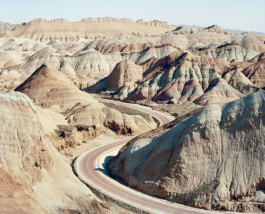

The idea of a possible past opens pathways to places and narratives that cannot be found in either the Present or the Future. The Elsewhere becomes an exile for another time, a vast Landscape with open horizons to explore. This landscape is a keeper of myths, stories, and folklore.

The subject is able to fantasize freely, deriving personal meanings from objects, symbols, events and their interconnections. Myths allow a different historiography and order of time. [02:30]



(03) Innocence: A quality attributed to the Elsewhere.
The imagined Landscape is a realm of memories. In this imaginative refuge memories of childhood, youth and innocence morph into a site of carelessness and longing for a simpler existence. In the immediate Here places of nature and rural areas remain limited, raising the subjects yearning for a life in tranquility and openness.

"Nature yields delectable sensation to the child, with his openness of mind, carelessness of person, and lack of concern for the accepted canons of beauty." [03:42]

(04) Ghost: "a time beyond history"
In the realm of the imagined Landscape time does not unfold in familiar ways. The subject experiences a place, where time does not seem to move forward. This site of imaginative projection becomes "stained by time", where ghosts of the past transform into companions, lingering throughout the entire experience.
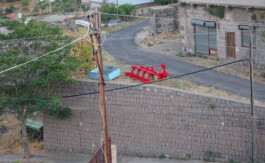


The specters are never fully present, their existence yet always haunting. In this realm anything can become a ghost.

The imaginary is formed by the circulation of pre-existing images, ideas, theories, and emotions within global and local spheres. These elements form the foundational basis of anything that can be imagined. The subject’s imagined landscape, therefore, emerges as an assemblage of various references.

The imagined landscape offers harmony and comfort, yet it can never escape the boundaries of reality, defined by concrete and real borders and territories. What serves as one subject's imaginative exile becomes another's source of unease. [02:49]
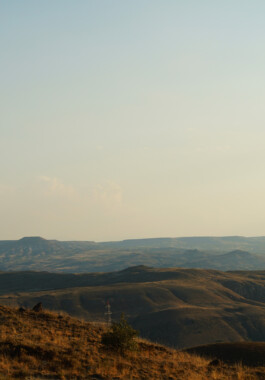

(06) Artifact: The Elsewhere as a non-place?
The imagined landscape functions as a site of transit, compressing time and space. While the subject remains in a state of movement, it seeks meaning in a place that extends far beyond its locality. The Elsewhere no longer functions as a retreat, nor as a place to easily escape to. Even here, there is no promise of standstill, no true escape, and no coherent resolution of the subjects identity. The sense of this place remains diffuse.
It is more than an archive for desires, possibilities, and fears too complex and unsettling to manifest in the present Here. The imaginary works like a synthetic fabric draping itself over the topography of the actual landscape. A veil continuously blurring contours, reshaping its form and meaning. [03:18]
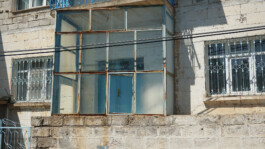
The Elsewhere is no longer a destination the subject enters; instead, the Elsewhere enters into the subject’s realm, emerging in moments of uncertainty, briefly accompanying before disappearing again.


Landscape and Monuments as a Public Memory;
top: Demolition of the Monument to Humanity.The site-specific installation was commissioned following the Zurich Protocols from 2009, to establish formal diplomatic recognition between Turkey and Armenia. However, in 2011, the monument was demolished by the Turkish government, with then-Prime Minister Recep Tayyip Erdoğa calling it a "freak" that disrupted the landscape.
bottom: The Çanakkale Martyrs' Memorial, located in Gallipoli, Turkey. A towering structure commemorating the Turkish soldiers who died in the Gallipoli Campaign during World War I. It symbolizes national pride and sacrifice, reflecting Turkey's deep connection to its wartime and military history.
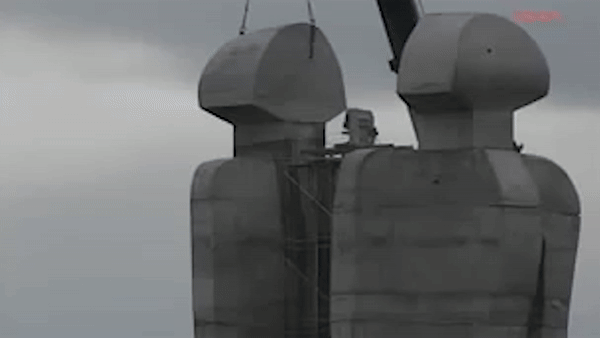
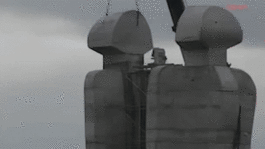


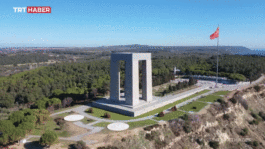
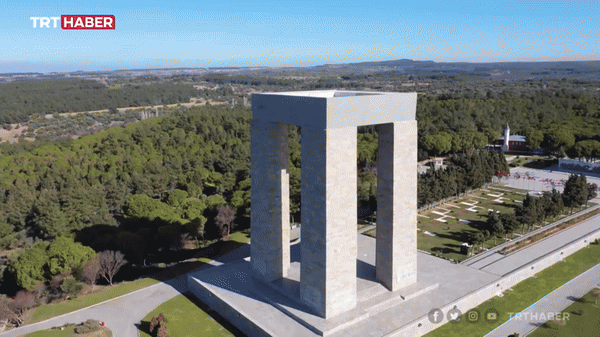
Memories:
subjective recollections and emotional responses tied to specific places and built environments;
individual and collective narratives that shape our understanding of identity, cultural heritage, and the relationship between past and present;
Time:
linear or non-linear;
the continuous, multidimensional flow in which spatial and material transformations occur;
embodying the temporal relationships between memory, history, and the unfolding of events;
Soil:
shaping landscapes;
symbolizing the intersection of nature, culture, and human intervention in the built environment;
Aesthetics of Modern Folklore in Turkish Culture;
Depiction of Mountains, Deserts and Nature as a Place of Myth and Longing;
left: Music Video "Tarkan - Kuzu Kuzu"
right: Music Video "Baris Manço - Daglar Daglar"




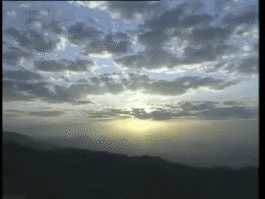

Visual Explorations of the Place of Confrontation:
left: Hanefi Yeters Paintings of Berlin, around 1975-1985. Considered to be the first Illustrations of Turkish-German realities.
background: Videoclip "Köln-Porz Deadline". Self-Portrayal of migrant Youth in Germany in the early 2000's.



Longing:
deep, persistent desire or yearning for something unattainable or distant;
a sense of emotional almost physical ache;
"My Country or the Stars or my Youth, What's Farthest?"(Nazim Hikmet)
Historiography:
in this context: subjective order of events;
Elsewhere:
where the mind wanders;
place of imagination;
constructed homeland;
"for soils and territories still exist, not just in the reality of facts on the ground, but even more in that of individual and collective awareness and imagination"(Marc Augé)
Speculation:
imaginative transformation of the current condition;
Possible Past:
the potential of things and places left behind;
"what is no longer or not yet"(Martin Hägglund)
Here:
the place of presence;
or the place of confrontation;